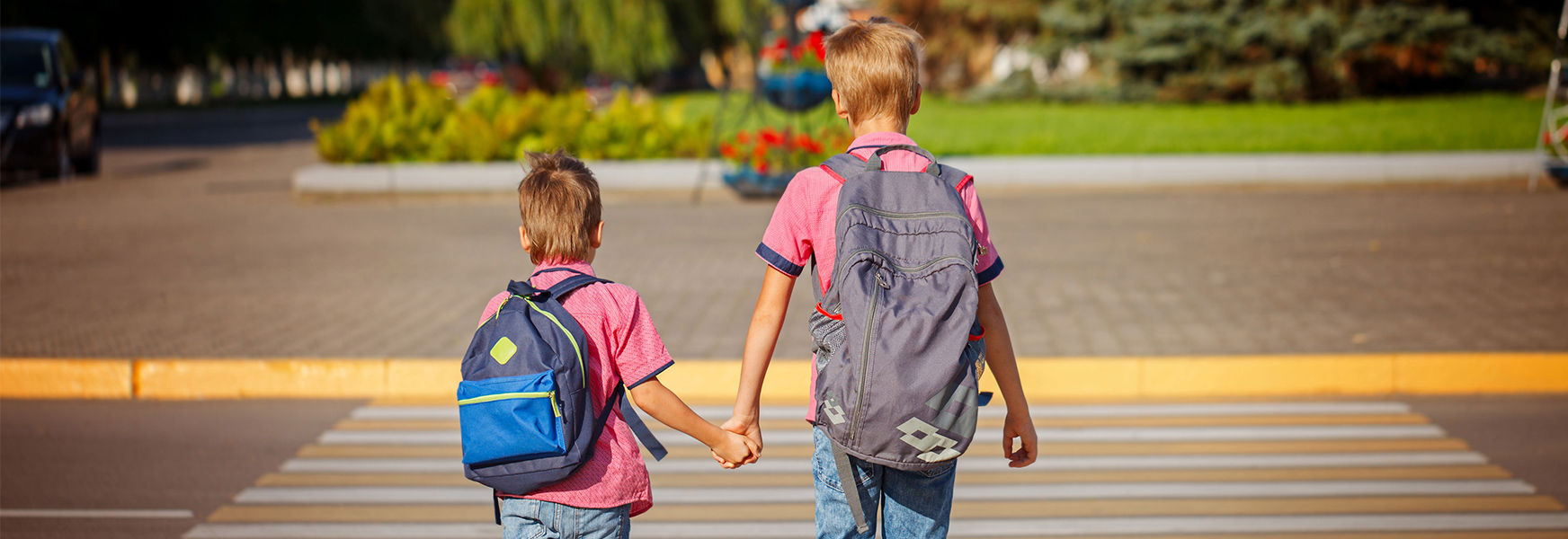Pedestrian Safety Part II – Better Engineering Can Save Lives

Last week’s post entitled, “Pedestrian Safety- Are you a Jaywalker?” focused on pedestrian behavior.Distracted walking is increasing and ultimately we are all responsible for our safety when walking along or across roadways.
But there are other perspectives that should be considered as well. There have been numerous Safety Net posts related to distracted driving, but the message is worth repeating here. If a pedestrian is struck by a moving vehicle clearly a human failure has occurred. Pedestrians are expected to follow best practices such as using crosswalks, looking carefully in all directions, and not assuming drivers can see them. Likewise, drivers are expected to follow the rules of the road - yielding to pedestrians, slowing down in areas where people often cross roads, and remaining alert for the unexpected. We are in this together and the responsibility is shared.
While most vehicle safety innovations are designed to protect vehicle occupants, the IIHS study referenced in our previous post highlighted two technology improvements that could help save pedestrian lives. Better headlights help drivers see pedestrians sooner and front-end collision prevention systems could detect pedestrians when the driver fails to do so.
This time of year the sun is rising later and setting earlier, so drivers must consider the reduced visibility that can result by driving into the sun low in the sky or during the longer night hours. Most pedestrians who died in 2016 were struck at night, so newer LED and high intensity discharge (HID) headlights, headlights that swivel when the steering wheel is turned, and automatic high beams are examples of improvements that can lead to better visibility and therefore, better pedestrian safety.
Front-end collision avoidance systems feature several systems including adaptive cruise control, lane departure warning, and automatic emergency braking. The system from Subaru called EyeSightÒ is also designed to detect pedestrians in the roadway. According to the Highway Loss Data Institute, vehicles equipped with EyeSightÒ have experienced a significant decrease in bodily-injury only insurance claims.
Technology can also make roadways safer for pedestrians by improving cross walks, signage, signals, and other infrastructure. The Pedestrian and Bicycle Information Center has compiled research on the effect of pedestrian safety countermeasures. The list is long and the research extensive; follow the link above if you’re interested in the details. The bottom line: the more visible the better.
O’Connor Auto Park is an auto dealership in Augusta, Maine that has taken on the challenge of pedestrian safety as they have sales locations on both sides of a busy street. There has been a crosswalk for many years, but it had limited effectiveness. Drivers just didn’t expect to see a crosswalk mid-block, so they often drove through and didn’t even notice the people who were waiting to cross. There are no cross streets in the area, only driveways into O’Connor lots. After meeting with city officials they agreed to install yellow warning signs on each side of the road to warn drivers of the crosswalk.
According to O’Connor’s Safety Director, Rusty Greenleaf, the signage has helped. More drivers are stopping as employees use the better marked crosswalk. However, it hasn’t completely solved the problem. Drivers are more aware of the crosswalk and yielding to pedestrians more often. Unfortunately, drivers behind are sometimes confused as to why the car in front of them is slowing down. They will accelerate and attempt to pass just as they are reaching the crosswalk.
Similarly, the Maine Coast Waldorf School is looking to improve their mid-block pedestrian and overall vehicle traffic safety. Currently the school zone speed limit is in effect only when “students are present.” The school Business Director, Mark Ruggiero, would like to see a more visible and robust system to protect pedestrians as well as reduce the risk of vehicle accidents for parents dropping off and picking up students. The school has hired a traffic engineer to assist them and is working with the town of Freeport on possible upgrades. These could include flashing amber lights and imposing the 15MPH school zone speed during morning and afternoon hours regardless of student foot traffic.
In both of these situations fiscal restraints are a reality that has, or could, limit the extent of the roadway improvements. Funding is often based upon the number of pedestrians or the number of vehicles in a particular area. The more sophisticated the improvement, the higher the cost. Organizations like O’Connor Auto Park and the Maine Coast Waldorf School are engaged with their local officials in an attempt to make their part of the world a little safer.
Keeping pedestrians safe is a complex issue that requires a complex solution. Raised crosswalks, improved crosswalk markings, traffic speed limits, flashing signage, extended curbs, and advanced vehicle technology are all part of this solution. If we can work together we might just reverse the alarming increase in pedestrian and cyclist fatalities. But there is no substitute for driver and pedestrian awareness. As Greenleaf told me, “People need to pay attention to actually driving and put other things off until they stop driving.”
For more information, check out the resource page on pedestrian safety from the National Safety Council as well as our resources for MEMIC policyholders within the Safety Director at MEMIC.com.
By Randy Klatt

